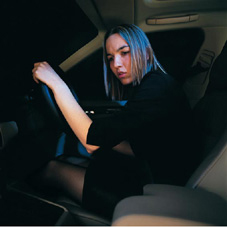|
|

|
Bitter Sweet

|
As the title suggests, there are mixed emotions at play in this exhibition of seven contemporary Australian artists. Through paying close attention to the detail of our lives they offer insight into how we interact with each other and the world in which we live.
This is art with an aftertaste. In common with other recent cultural practices that focus on contemporary living, these works locate themselves somewhere between irony and belief. In a time when we are almost reflexively ironic, the desire to reconnect is moderated by an inability to be gullible enough to take the world at face value.
One counter to this in art has been the foregrounding of a personal or subjective response. The attempt to articulate this response is also a part of the art work, resulting in works that are exploratory, reflective and at times deliberately banal as they range from confessional videos to exotic embroidered creatures and protest placards.
As in much recent television and media, the personal is performative however, tempered by knowing that it is in turn being observed. We all modify our behaviour when we know we are being watched, so what happens to art when it is about this very subject of being looked at? Watching ourselves interact and the slippages between public and personal selves inform many of these works.
If Darren Sylvester's photographs look like sophisticated 'no-product' advertisements or super-chic corporate brochures, it is not necessarily because they are criticising commodity culture. Sylvester uses our most instantly recognisable visual language as the most effective way to present his subject matter. In They return to you in song, he depicts the moment of remembering a broken relationship, triggered by a pop song on the car radio. Equally, this image suggests how we personalise popular culture by attaching our own experiences and memories to the most public forms of mass media.
Callum Morton is interested in the architecture of the 'non-spaces' of leisure and mass culture - freeways, shopping centres, service stations, cinemas and convenience stores - buildings that are transit zones or backdrops to their intended function. Morton's minimal sculptural versions reintroduce narratives that are at odds with this social design and yet are somehow entirely appropriate for the setting. In Morton's new work a freeway seems perfectly engineered for a road rage incident.
Louise Weaver's woven, sewn and stitched beasts have little connection to the natural. Darwinian evolution theory has been to a disco and the result is the foxiest sequined fox, a rainbow tailed raccoon, and a sumptuous regal ermine. These are fetish objects, with their sleek surfaces and luscious tails, and therapeutic companions. Soft toys carry the weight of being attributed human values and desires: for a cuddly and unthreatening nature, for unconditional love, for someone who understands us.
David Rosetzky's video installations form a social portrait. Rosetzky films confessional monologues in which his sitters discuss personal experiences but in a style and language familiar from television and magazines. Their desire for individuality and acknowledgement of their particular experience is limited by the ways in which they can discuss this publicly. As his videos progress it becomes increasingly unclear as to who is being spoken about and what the speakers relationship is to them, just as it is unclear as to whether these are scripted or real confessions. Rosetzky perfectly captures how we increasingly live as if a reality TV camera is just around the corner.
In Stephen Birch's new installation a chandelier is caught in the tip of a verdant weed growing out of a rubber tyre. Other scattered weeds, tyres and debris turn the gallery into a disused wasteland. The chandelier is both decadent and aspirational, suggestive of the hyperbole of urban renewal schemes, it is spiked by the troublesome colonising plants. Birch's surreal objects enact the gap between the rhetoric and reality of urban living.
Questions of choice lie at the heart of Raquel Ormella's practice. The banners, placards,
t-shirts and pamphlets that Ormella studiously makes seem to be for lost causes: both personal social agency and for political agency in art practice. While rehearsing the classic issues of left-wing politics, she inflects them with her own anxieties about making and exhibiting art works. The placard "This is not the life my mother wanted for me" both personalises and universalises the poverty many artists experience.
Adam Cullen's darkly satirical paintings continue to document the flaccid underbelly of contemporary Australian life. They embody a breakdown in the ability to process the 'white noise' of information we encounter daily, from news as entertainment to graffiti, post-it note doodles, games shows, and punning word plays. Fragments of familiar sentences and images surface in Cullen's paintings, out of context and invested with a surplus of meaning through being turned into art. Cullen's social allegories form a cutting portrait of the banal underpinnings of our national psyche.
|
| On view: | Saturday 20 April to Monday 10 June 2002
Art Gallery of New South Wales
Art Gallery Road
The Domain, Sydney AUSTRALIA
www.artgallery.nsw.gov.au
| | Telephone: | (02) 9225 1744 or recorded information (02) 9225 1790
| | Hours: | 10am to 5pm 7 days a week | | Admission: | Free of Charge | | Media Information and Interviews: | Claire Martin, Press Office
Telephone (02) 9225 1734
Email clairem@ag.nsw.gov.au
images available on request
| Darren Sylvester They return to you in song 2001 Lambda print on aluminium, acrylic, courtesy of the artists and William Mora Galleries
|
|
|